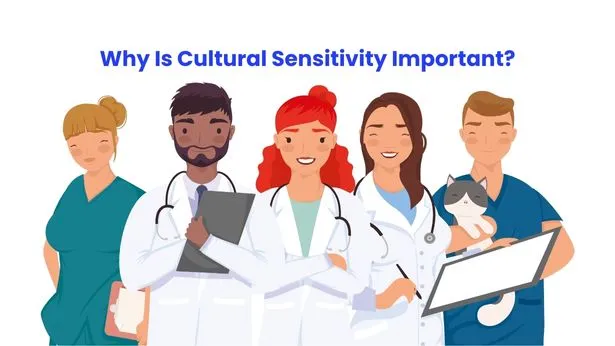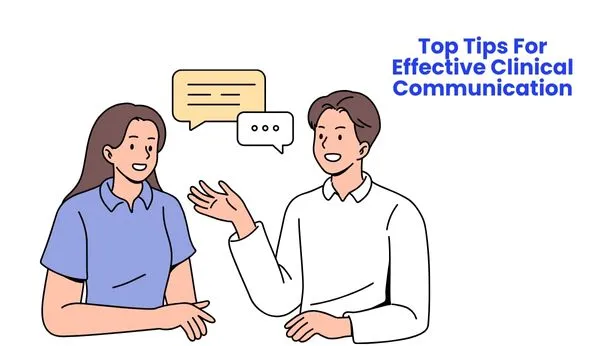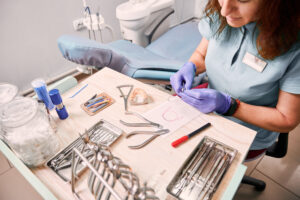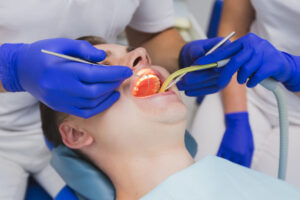Cultural Sensitivity in Dentistry: Challenges and Effective Solutions
Cultural sensitivity in Dentistry is a fundamental aspect of providing quality oral health care in the diverse society we live in today. Dentists and their teams encounter patients from diverse cultural backgrounds with unique values, beliefs, and communication styles. Dental professionals need to recognize and respect their patients’ cultural differences to deliver effective, patient-centered care.
This blog post aims to identify some of the main issues that arise in dental practices when working in multicultural settings, and to offer practical, inclusive dental care strategies that support the effective delivery of oral health care to diverse patient populations, while enhancing communication within dental care.
Why Cultural Sensitivity Matters in Dentistry

The dental chair is a setting where trust and understanding can greatly affect treatment success. Patients who feel respected and understood are more likely to follow recommendations, return for follow-up appointments, and adhere to recommended oral hygiene schedules. Without cultural competence in dentistry, misunderstandings can occur, personal dissatisfaction can arise, and treatment adherence can decrease, resulting in poorer health outcomes.
Dental practices aiming to provide culturally sensitive care are better positioned to meet the needs of their communities and reduce health disparities, as well as establish a sense of belonging for all patients.
Challenges in Multicultural Dental Settings
Delivering care in a multicultural environment is rewarding but has its distinct challenges. The first step to finding effective solutions is to recognize the challenges in multicultural dental settings.
1. Language and Communication Barriers: Language barriers can pose major challenges. Miscommunication about a patient’s symptoms, treatment plans, or post-care instructions can lead to anxiety about care, errors, or refusal to care altogether. Focusing on cultural sensitivity in dentistry can help mitigate knowledge or unknowable gaps.
2. Varied Health Beliefs and Practices: Cultural backgrounds have unique health beliefs or ways of practicing health. Some patients may practice informally and use traditional remedies or adhere to cultural or religious restrictions on certain treatments. Recognition of these nuances is important to providing a diverse approach to patient care in dental practices.
3. Mistrust and Fear: Historical and social experiences that have influenced mistrust towards healthcare providers may affect some communities. Recognizing that this distrust may exist and utilizing cultural sensitivity in dentistry can also help facilitate a more collaborative patient-provider relationship.
4. Socioeconomic and Access Issues: Many minority and immigrant communities are financially burdened, lack insurance, and do not have easy access to care, all leading to worse oral health outcomes. A focus on diverse patient care in dental practices may improve community inclusivity and accessibility for these patients.
5. Limited exposure to cultural competence training: Many dental professionals have only limited exposure to cultural sensitivity in dentistry. In many cases, as no training or awareness exists, practitioners may be unprepared to treat and assist patients of diverse populations. Working to build this capacity is an ultimate necessity if you truly wish to overcome encounters in multicultural dental environments.
Also Read: Who Should Avoid a Career in Dentistry?
Inclusive Dental Care Strategies to Overcome Challenges
In order to effectively handle complications in multicultural dental settings, dental practices must adopt inclusive dental care strategies that enhance understanding and communicate cultural sensitivity in dentistry. Such strategies enhance communication, trust, and patient satisfaction. Here are some recommendations:
1. Use Cultural Competency Training: Ongoing training sessions provide awareness and skills for dental teams to understand cultural differences. Continuous training in cultural sensitivity in dentistry prepares professionals to interact with patients respectfully and effectively.
2. Employ Multilingual Staff and Interpretation Services: Employing bilingual staff or utilizing a professional interpreter improves communication for patients and reduces anxiety. It is a necessary means to foster inclusive dental care strategies and ensure patients understand their diagnosis and treatment plan.
3. Personalize Oral Health Patient Education Material: Providing oral health education in a range of languages and creating various formats (content in brochures or videos) accommodates every patient while tailoring content to appropriate literacy levels and cultural preferences. Customizing patient educational materials demonstrates cultural sensitivity in dentistry and engages patients.
4. Enhance Welcoming Environment: Implementing culturally inclusive items in printed office materials, décor, and communication, and accommodating scheduling to recognize cultural holidays makes dental patients feel respected and valued. These concepts form the basis of inclusive dental care strategies.
5. Involve Patients in Shared Decision-Making: Create opportunities for discussion about preferences, beliefs, and concerns throughout the treatment planning process. When patient input is paired with professional expertise, care plans reflect cultural safety in dentistry with good clinical outcomes.
Improving Communication in Dental Care: Practical Tips

Good communication is the key to being culturally sensitive in dental care, and a fundamental part of providing diverse care in a dental practice. Here are some practical ways to improve communication:
1. Use Plain Language: Avoid jargon and use plain, clear language to explain dental terms and conditions.
2. Listen Actively: Provide patients with opportunities to discuss their concerns while you listen to their needs.
3. Use “Teach-Back” methods: Encourage patients to repeat information to you.
4. Be Aware of Nonverbal Cues: Recognize that different cultures have different gestures, ways of making eye contact, and personal space preferences.
5. Utilize Visual Aids: If possible, use diagrams, other models, or videos that can be utilized when language is a barrier.
6. Be Patient and empathetic: Respect cultural differences without judgment and focus on being patient through new experiences.
Benefits of Embracing Cultural Sensitivity in Dentistry
Lots of great advantages can come from embracing inclusive strategies for dental care beyond addressing barriers in the dental office. There can be:
1. Increases in patient satisfaction and trust.
2. Higher adherence to treatment, which will help shrug off oral disease.
3. Increases in patient retention rate and more word-of-mouth referrals.
4. Decreases in the health gap of underserved groups.
5. Decreased professional burnout and increased job satisfaction.
Final Call on Cultural Sensitivity in Dentistry
Achieving cultural sensitivity in dentistry will be critical to delivering equitable and effective oral healthcare in a multicultural world. Understanding some of the obstacles faced in multicultural dental environments and providing inclusive dental care can greatly benefit diverse patient care and stronger patient-provider relationships. The top priority is to improve communication in dental care, where every patient feels heard, respected, and confident in their treatment.
Dental professionals and practices that pursue cultural competence become leaders in compassionate care, which supports healthier communities.
Ready to Transform Your Dental Practice? Start integrating cultural sensitivity today by training your team and adopting inclusive strategies that resonate with your diverse patient base. The journey to better patient care begins with understanding and respect.
For expert support, contact Hire Smiles, your trusted dental recruitment agency, to help you build a culturally competent team.
FAQs on Challenges and Solutions on Cultural Sensitivity
Q1. What is cultural sensitivity in dentistry?
Cultural sensitivity is the ability to acknowledge and honor the differences in cultures of patients to provide culturally tailored patient-centered oral health care.
Q2. Why is providing a diverse array of patient care important in dental practices?
Providing diverse patient care is important because it allows patients from all backgrounds to receive equitable, respectful care and effective treatment.
Q3. What are some of the common issues found when working with multicultural patients in dental practices?
Common issues include: language barriers, differing health beliefs, suspicion/mistrust, socioeconomic issues, and cultural incompetence.
Q4. What are some ways that dentists can improve communication with patients from diverse cultures?
Dentists can improve communication with patients by utilizing plain language, active listening, visual aids, and confirming patient comprehension.
Q5. What are some inclusive patient care strategies?
Inclusive patient care strategies include: cultural competence training, multilingual staff, customized patient education materials, and patient participation in shaping plans of care.
Q6. How does cultural sensitivity impact patient outcomes?
Cultural sensitivity improves trust, compliance with treatment plans, satisfaction, and, in turn it impacts the overall oral health of the patient.
Q7. Will cultural sensitivity improve health disparities?
Nil, cultural sensitivity will provide equitable care appropriate to the cultural needs of the patient.
Q8. What are the ways dental practices create a culturally inclusive environment?
Dental practices can foster a culturally inclusive environment through respectful policies, hiring a diverse workforce, the use of culturally appropriate practice materials, and offering flexibility in scheduling appointments.
Related Article: Ways To Improve Your Dental Office Culture





